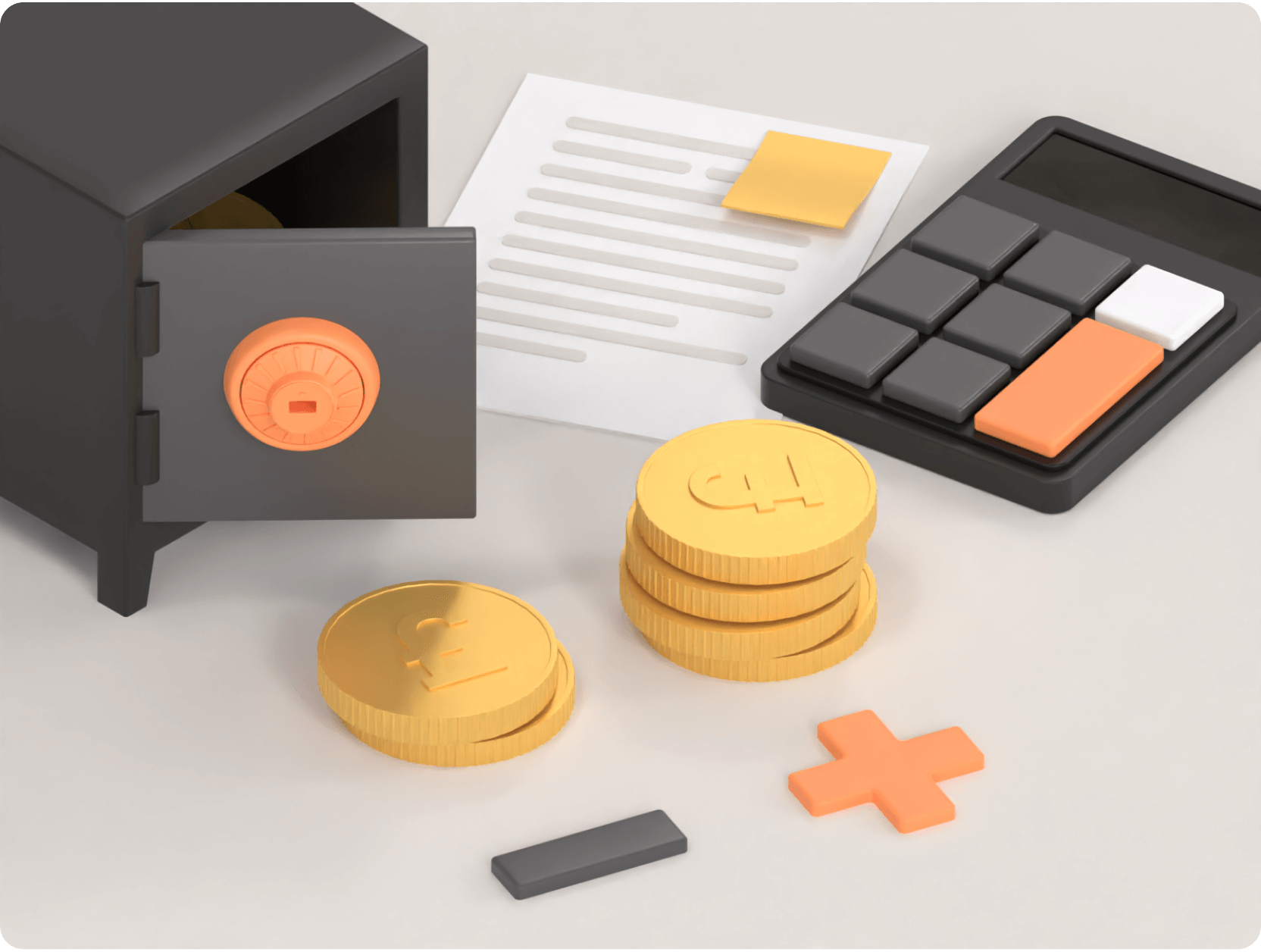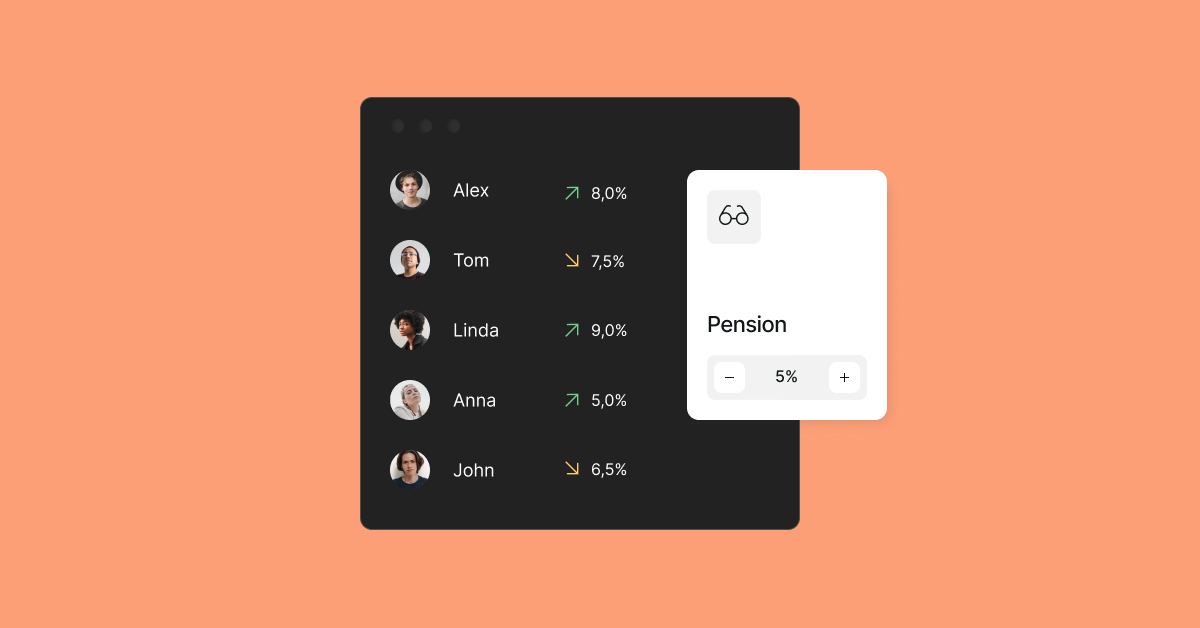HMRC Tax Codes 2023/24: What do they mean and why do they change?
In the UK, all income and benefits you from your employer is subject to income tax collected by HMRC. Income tax is usually calculated and deducted as PAYE from gross salary based on an employee’s tax code and the amount of income.

Changes to HMRC tax codes in 2023
PAYE has seen some changes relevant for high earners and those paying off student loans. Here is a short summary:
- Personal allowance: The personal allowance of £12,570 remains unchanged, which means the standard tax code for the tax year 2023/24 is 1257L just like last year.
- High earners: The additional tax rate bracket which is subject to 45% income tax (47% in Scotland) now starts already on annual earnings above £125,140 which is lower than the previous threshold of £150,000.
- Student loans: Plan 1 and Plan 4 student loan thresholds were increased to £22,015 and £27,660 respectively.
Read on here for more information about changes to payroll taxes in 2023.
What is an HMRC tax code?
An employer uses tax codes to determine how much income tax to deduct from gross pay. The tax code consists of a tax code number and a tax code letter
- The tax code number indicates the amount of tax-free Personal Allowance and also takes into account any income which has not been paid tax on yet (such as untaxed interest or part-time earnings) as well as the value of any employee benefits such as a company car.
- The tax code letter indicates how the tax code is applied.
Tax code letters explained
Letters in a tax code refer to an employee’s situation and how it affects the Personal Allowance.
| Letters | What they mean |
| L | You’re entitled to the standard tax-free Personal Allowance |
| M | Marriage Allowance: you’ve received a transfer of 10% of your partner’s Personal Allowance |
| N | Marriage Allowance: you’ve transferred 10% of your Personal Allowance to your partner |
| T | Your tax code includes other calculations to work out your Personal Allowance |
| 0T | Your Personal Allowance has been used up, or you’ve started a new job and your employer does not have the details they need to give you a tax code |
| BR | All your income from this job or pension is taxed at the basic rate (usually used if you’ve got more than one job or pension) |
| D0 | All your income from this job or pension is taxed at the higher rate (usually used if you’ve got more than one job or pension) |
| D1 | All your income from this job or pension is taxed at the additional rate (usually used if you’ve got more than one job or pension) |
| K | You have taxable income beyond the tax-free Personal Allowance which cannot be taxed through other means |
| NT | You’re not paying any tax on this income |
| S | Your income or pension is taxed using the rates in Scotland |
| C | Your income or pension is taxed using the rates in Wales |
Why are tax code changes needed?
Normally at the start of the year, every employee gets assigned a new tax code based on the latest tax free allowance, adjusted for any over- or underpayments in the past tax year that is being rolled over into the new tax year.
If HMRC notices throughout the tax year that someone has been overpaying or underpaying tax, it adjusts the tax code accordingly so that by the end of the year the difference ends up to be 0, and sends a tax code change notice to their employer, which needs to be reflected in its payroll system.
Most common tax codes
While there is a huge amount of possible permutations of tax code numbers and letters, many employees have same, or at least very similar tax codes, including:
1257L tax code: The standard tax code for 2023/24
The standard tax code for this current tax year 2023/24 is 1257L, based on the UK personal income tax free allowance of £12,570 per year. It is made up of the tax free Personal Allowance for the tax year divided by 10 plus the letter suffix L, which indicates that you are under 65 and eligible for the standard tax-free personal allowance
For example, if an employee earns £37,000 per year, they will only pay tax for £24,430 if their tax code is 1257L, and they will pay tax on £27,000 if their tax code is 1000L.
BR tax code: The base rate tax code
The tax code BR means Basic Rate and results in all income getting taxed at the basic tax rate of 20%. This tax code is usually applied in the case where an employee has another job or switches jobs in the middle of the tax year and does not provide information about its tax status to its employer.
OT tax code: No personal allowance
This tax code means that you are not entitled to any tax-free personal allowance and all income is taxed in line with income tax bands. It us often used when you earn more than £125,000 or your employer doesn’t have enough information about your previous employment.
Can my Personal Allowance be negative?
While the Personal Allowance in itself cannot be negative, someone can have a letter K tax code, which indicates that the employee has taxable income beyond the tax-free Personal Allowance which cannot be taxed through other means.
This has the same effect as having a negative allowance as tax is charged on an amount that is higher than the actual earnings, and it usually happens when an employee is:
- paying tax still owed from a previous year
- receiving benefits which need to be paid tax on
The tax on untaxed income is deducted by the employer regardless of the source of that income, however employers cannot deduct more than 50% of the total wages before tax.
Why employees sometimes over- or underpay taxes
There are several reasons why employees in the UK might over or underpay tax, including:
- Incorrect tax code: An incorrect tax code can result in either overpayment or underpayment of tax. A tax code is a combination of numbers and letters that HM Revenue and Customs (HMRC) uses to calculate the amount of tax an employee should pay. If an employee has the wrong tax code, their tax deductions may be incorrect.
- Multiple jobs or income sources: If an employee has more than one job or other sources of income, it can sometimes lead to underpayment or overpayment of tax. HMRC will typically assign a tax code to each job, and if an employee has multiple jobs, the tax code for each job may not accurately reflect their total income.
- Changes in personal circumstances: Changes in an employee’s personal circumstances, such as getting married, having children, or moving to a new address, can affect their tax liability. If HMRC is not informed of these changes, an employee may end up overpaying or underpaying tax.
- Benefits in kind: Benefits in kind are non-cash benefits that an employer provides to an employee, such as a company car or private health insurance. These benefits are subject to tax, and if an employee does not report them correctly, they may end up underpaying tax.
- Self-employed income: If an employee has self-employed income in addition to their employment income, they may need to pay additional tax on that income. If they do not accurately report their self-employed income, they may end up underpaying tax.
To avoid this, it is important for employers to onboard employees correctly and for employees to keep their tax information up to date with HMRC by reporting any changes in personal circumstances, additional income, or benefits in kind to ensure that they pay the correct amount of tax.
Two methods to implement a tax code change
There are two ways how income tax can be calculated. the regular method is cumulative but under certain circumstances when cumulative is not possible due to lack of information, it can be calculated on a per-month / per-week basis, which is called the Month 1 or Week 1 method.
Cumulative tax method
Income tax (PAYE) is normally calculated on a cumulative basis. This means that you progressively earn your tax free allowance as the year progresses, and pay income tax taking into account your year-to-date figures for income, tax paid and allowance earned:
+ (income received YTD – allowance earned YTD) * tax rate
– income tax paid YTD
= income tax payable
If you are on a monthly pay period, you earn 1/12 of your annual tax allowance per month. That means if you are getting paid in August 2022 and have a tax code 1257L, you have a monthly allowance of £1,048 and have earned 5/12 of your annual allowance, i.e. £5,238. Keep in mind that the tax year starts in April.
If you are on this method and your tax code changes during the year, prior months are impacted too, because a different tax code was in place at the time. This means that in the month of the tax code change you will make up for or get back any difference in income tax you would have paid if you had been on this new tax code at the start of the year.
For example, if your tax code changed from 1257L to 1000L (cumulative) in August 2022, not only will you now pay more taxes for the month of August based on the lower monthly allowance of £833 but you will repay taxes on the difference in tax free allowance in the 4 months prior to August, i.e. 4 x (£1,048-£833) = £859, which at a base tax rate of 20% means an additional £172 in PAYE.
As a result your PAYE deduction on your August payslip will be £172 higher than going forward for the remaining months of the year.
Week 1/Month 1 method
There are some employees who have the Week 1/Month 1 settings attached to their tax code (usually marked by the M suffix). This means that their payments will be taxed as if it was the first week/month of the financial year, without taking into account the contributions made earlier in the year.
This setting is mainly used to prevent heavy deductions or giving refunds in case an employee has underpaid or overpaid tax to that point during the financial year.
For example, if the employee has underpaid their tax and they have the Week1/Month1 setting added to their tax code, that means that they will pay the remaining tax difference spread across the remaining months in the financial year.
If the employee has overpaid tax and they have the Week1/Month1 setting added to their tax code, they will deduct less tax for the remaining of the tax year so you earn back gradually what you have overpaid. This differs from the cumulative method, where the difference would be paid back in one go.
Frequently asked questions about tax codes
What if I have a wrong tax code?
If you have over-or underpaid income tax, HMRC will let your employer know automatically, who will then update their payroll system to collect or reimbursed the differential in future pay runs.
How can I change a tax code?
Incorrect tax codes can be easily updated and corrected in your employer’s payroll system at any point in time. Using a tax code change as described above results in any amount of taxes over- or underpaid being returned or collected in future pay period, either in one go (cumulative method) or spread out across the remainder of the year (Month 1).
Why has my tax code changed?
Tax codes change normally at the beginning of the year if the government has changed the personal allowance which you can earn without paying any income tax in the tax year. For example, the personal allowance has increased from 1250L in tax year 2021/22 to 1257L in tax year 2022/23, resulting in the standard tax code change from 1250L to 1257L. Tax codes can also change when HMRC realises that you have over- or underpaid tax, in which cases it adjusts the tax code in a way so that the difference is evened out by the end of the tax year, and informs your employer about the change using a tax coding notice.


